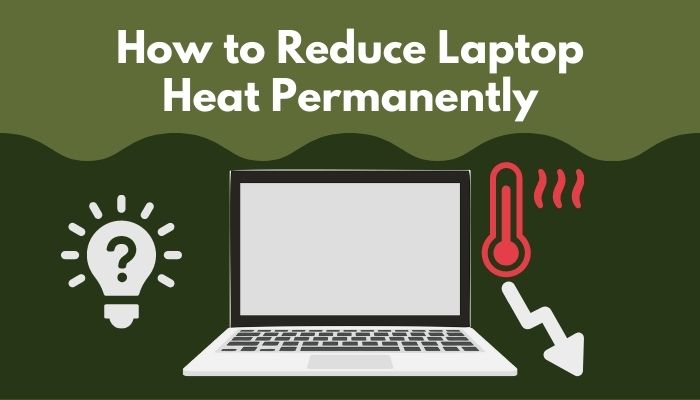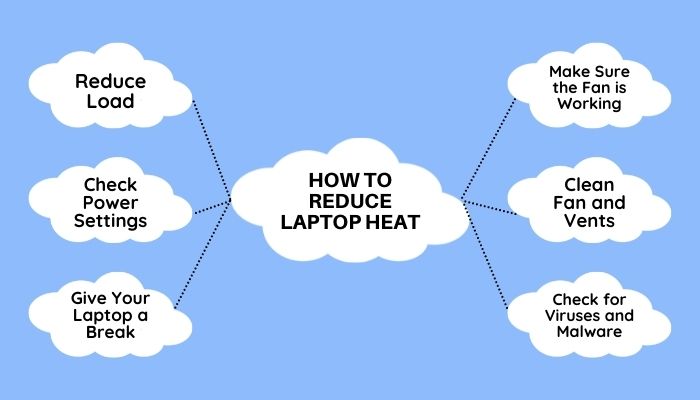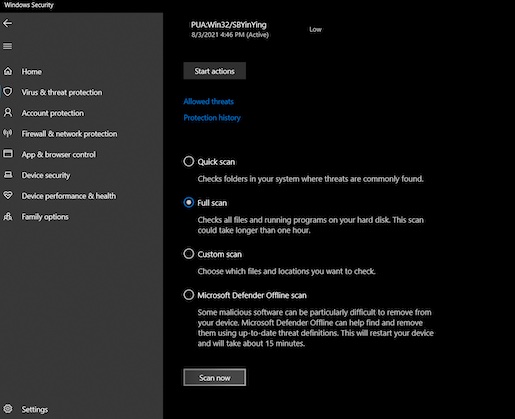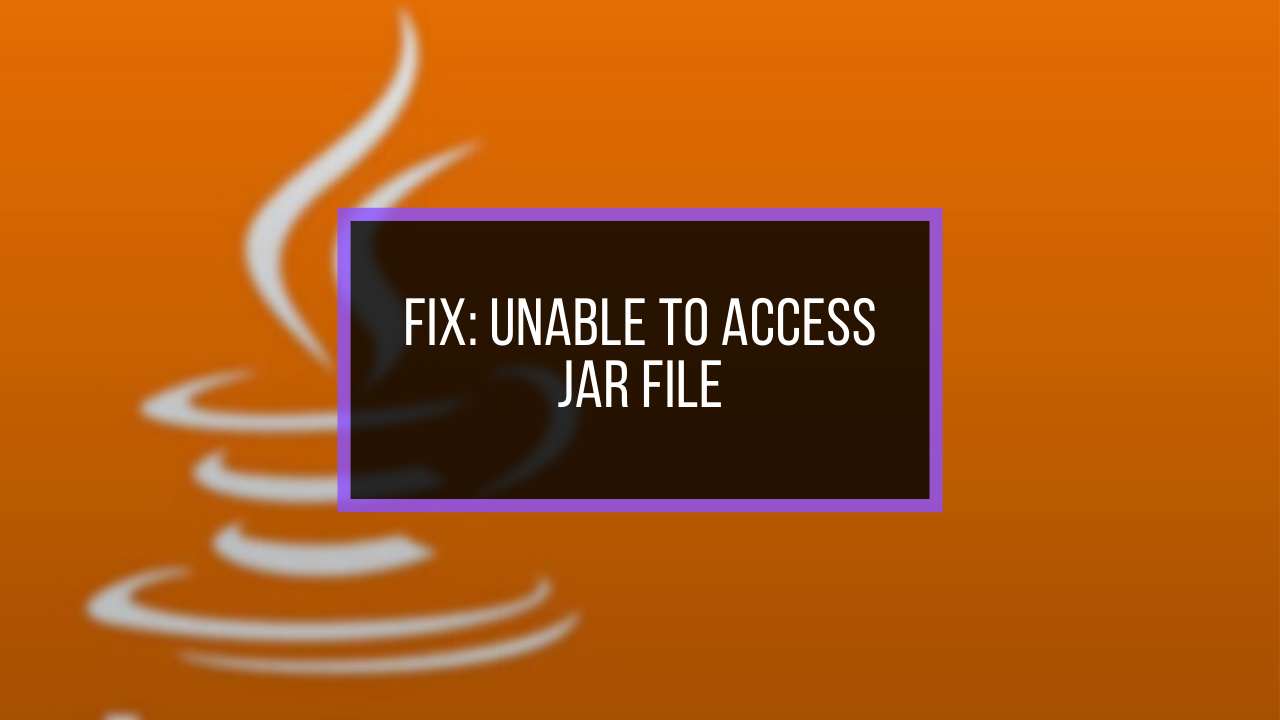Hello there! Do you feel like your laptop is getting so hot that you can start cooking on it? And when you start gaming, do you feel like there’s actually a jet engine inside your laptop, and it’s going to blast off at any moment?
Well, you are not the only one with this kind of laptop. Go through the article to learn how to reduce your laptop heat, how to know if your laptop is overheating, and maintain an optimal temperature for your laptop.

As high temperatures can shorten your laptop’s life span by more than half, pay attention to everything I’ve provided here. So, your laptop may live a long and happy life.
How to Know Your Laptop is Overheating
The obvious indications of laptop overheating are when the fan sounds like a jet engine and the out-take vent feels like it will burn your hand.
A laptop will increase the temperature when it is in use for hours. That’s normal, but when the temperature exceeds 85°C, that’s not normal, and you should take the necessary steps to fix it.
Here’s how you know your laptop is overheating:
1. Check Temperature
When the laptop is under regular use, the temperature should be 40-50°C; when gaming, it should be 60-70°C.
If your laptop exceeds this range, the temperature often goes to 85°C or even higher; you should start working to reduce the temperature. Download HWMonitor, to get the temperature.
2. Performance Slows Down
Your laptop’s performance will drastically decrease. Simple tasks like typing or moving the mouse will slow down. Websites will take longer to load.
It happens because the CPU turns down its performance to save itself from raising even more temperature.
3. Laptop Turns Off by Itself
Most laptops have internal heat warning mechanisms that kick in when the internal temperature gets too high and shut down without any warning to prevent any damage to the internal components.
If your laptop shows these symptoms, you should perform the fixes I’ve provided in this article.
Also, check out our separate post on can overheating CPU cause lag.
How to Reduce Laptop Heat
Overheating is the main reason that a laptop becomes a waste. It can reduce the lifespan of a laptop by more than half.
So, why is your laptop overheating?
It’s ignorance. Ignoring to clean the fan, not giving enough room for vents. If dirt or dust is stuck on your laptop’s fan, it cannot pull cooler air in and drive warm air out, causing the laptop to heat up.
Sometimes, hardware problems can cause overheating as well. An old, defective battery can swell up and can start generating extra heat.
Dried-out thermal paste is also a common reason for laptop overheating. Thermal paste is the bridge between your laptop’s CPU and the heatsink. If it dries out, it cannot carry heat to the heatsink properly, causing the laptop to overheat.
If you think your laptop is overheating, just go through the solutions I’ve provided.
Here’s a complete guide on can overheating CPU cause blue screen.
Here are the fixes to reduce laptop heat:
1. Reduce Load
Close the apps you don’t need. Some apps can be running in the background, and you won’t even know. Open task manager and make sure to end the processes of the apps you are not currently using.
Also, don’t open tabs needlessly when surfing the internet. Make sure to close the tab after you are done with the web page.
2. Check Power Settings
Don’t use maximum processor speed all the time. If you do, this will stress your laptop’s CPU and produce more heat, even when the laptop is not doing any intensive work.
Change your laptop’s power plan to Balanced.
Click on the Windows icon > Settings > System > Power & sleep > Additional power settings > Balanced (recommended).
It will automatically balance performance with energy consumption.
Here’s a complete guide on how to fix CPU temperature jumping up and down.
3. Give Your Laptop a Break
We all need a break after a few hours of hard work. It fits your laptop too.
Shut down your laptop until it cools down again after a session of intense gaming. You could use the time to cool off as well.
4. Make Sure the Fan is Working
If your laptop is completely silent when running, it means the fan is not working.
Shut it down immediately before the CPU or GPU gets affected due to overheating. Go to a professional and replace the fan.
Also check our exclusive tutorial on how hot can a CPU get without Heatsink.
5. Clean Fan and Vents
Assuming that you haven’t cleaned your laptop in a year and it is getting hot, that’s most probably because dirt and dust are covering the laptop’s fan and vents.
No matter how high-tech latest, your laptop is, dust and dirt will get stuck to the fan and block the vent, preventing the fan from letting the cold air in and the hot air out.
You need to clean your laptop at least once a year. In case you are unfamiliar with disassembling your laptop, take it to a repair and service shop.
6. Check for Viruses and Malware
A virus or malware can cause stress to the CPU even when idle, resulting in a high-temperature laptop.
If you have a Windows 10 laptop, it will come with an antivirus preinstalled.
From the taskbar hidden icons go to Windows Security > Virus & threat protection > Scan option > choose Full scan > Scan now.
Check for viruses at least twice a week.
7. Avoid Hot Places
Don’t put your laptop in direct sunlight, even if it is turned off and the lid is closed. Also, avoid leaving it in a hot car.
The heat will increase the temperature of the laptop’s internal components and shorten their lifespan.
Here’s a complete guide on PSU overheating and how to get rid of overheating.
How to Keep Laptop at a Low Temperature
Keep your laptop on a hard, flat surface; provide sufficient breathing room; use a cooling mat. You can use software to check whether the temperature is rising.
Here’s how you can maintain a low temperature for your laptop:
1. Keep on Hard Flat Surface
When you are using your laptop, always keep it on a hard and flat surface to maintain proper airflow. Make sure the intake and outtake vents are not obstructed.
Clean the surface frequently, don’t let it collect any dust. Make sure any clothes or blankets do not surround the laptop.
2. Elevate Your Laptop
Elevating the laptop will ensure the intake vent at the bottom can breathe more cold air. Thus keeping the temperature at an optimal level.
You can use a book or invest in a laptop cooler.
3. Use Laptop Cooler
It is like a stand for your laptop with a big fan or multiple smaller fans inside it. It significantly reduces laptops’ temperature and doesn’t cost much.
But before you buy one, you should understand how the ventilation system works on your laptop. If your laptop’s intake vent is at the bottom, purchase a cooler that blasts cold air upwards.
Using the cooler or cooling pad/mat, you can also elevate the laptop and use it on beds.
4. Examine Room Temperature
Don’t use your laptop in a hot room; that’ll definitely increase the temperature. You can’t keep it in a cold room either. The cold room moisture will condense and damage your laptop’s internal components.
10-35°C is the sweet room temperature range to use a laptop without raising its temperature too high.
5. Monitor Laptop Temperature
Check CPU and GPU temperature often. If the temperature goes up too high, give your laptop a break.
Download HWMonitor; it’ll show the temperature of internal components separately, along with other things that’ll help determine your laptop’s health.
6. Use Softwares According to Your Hardware
If you are using an old laptop, don’t install modern operating systems on it or play new games and run high graphics-intensive softwares.
It will stress out the CPU, causing it to use more power resulting in high temperature.
7. Don’t Overclock the CPU
Yes, overclocking will increase your laptop’s performance, but it’ll take a massive toll on the CPU. And your laptop will overheat. So, don’t overclock.
Don’t underclock the CPU either. Just leave it as it is.
8. Reduce Maximum Processor State
Lower the maximum processor state; it will mitigate some pressure on the CPU and maintain a constant temperature.
Here are the steps to lower the maximum processor state:
- Click the Windows icon.
- Go to Settings > System > Power & sleep > Additional power Settings.
- Select Change plan settings of the plan the laptop is currently running on.
- Click Change advanced power settings and expand Processor power management.
- Set Maximum processor state between 70% to 90% for both On battery and Plugged in option.
Lowering this option will ensure the CPU remains cool and calm.
9. Lower Screen Brightness
If you are using a laptop indoors, reduce the brightness. It’ll keep the temperature in check.
10. Don’t Use When Charging
Try not to use the laptop when it is charging, as charging produces heat in the battery.
FAQs
Is laptop heating normal?
Yes, laptop heating is normal. However, if the temperature gets more than 85°C, that’s not normal, and you should take necessary measures to reduce it.
Can cooling pad damage laptop?
Cooling pad won’t damage your laptop as long as you keep everything neat and clean. But in case you haven’t cleaned the cooling pad in years, it’ll collect dust and blow it into the laptop, causing damage.
Do Gaming laptops overheat?
Gaming laptops don’t generally overheat. They are built to go through more stress than regular laptops. But the laptop might overheat if you play games for hours without a break.
Final Thoughts
Congratulations! Now you know everything there is to know on how to take care of a laptop, how to tell if it gets too hot and what to do if it overheats. You have nothing to worry about.
Let me know if you have any other inquiries regarding laptops. See you in the comment section.




